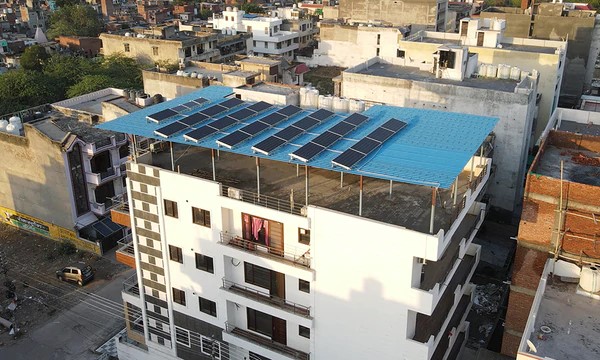Non-stop operating challenges in the field of the gas, oilfield, and underground mining has led the inflatable technology to become a mainstream go-to solution for those in jobs of high-pressure drilling, borehole measurement, and tunneling. And it is none other than the inflatable packers that have been extensively catering to the niche for over three decades now. The best thing about these tools is that they easily pass through restrictions and they are extremely sturdy to stand all the extremities and challenges of their projects.
With these tools rapidly gaining the ground in almost all parts of boring, sealing and mechanical jobs, it’s probably time to take a look at what makes these testing powerhouses really an unmatched solution in the field of special civil engineering and geotechnical studies. There are a plenty of informative and reliable sources, including http://www.aardvarkpackers.com/products-list/inflatable-packers/ and others that can tell you how these tools work and benefit their users. Another designer and manufacturer is IPI who supply oil, gas, mining and research companies with packers capable of up to 20,000 psi ratings.
What is an Inflatable Packer
As the name suggests, an inflatable packer is a plug equipment that can be extended and used in a wide array of decommissioning projects more specialized in terms of hole temperature and washouts etc. These plugs are both robust and versatile in nature and can be deployed where activities like hydraulic fracturing and high-pressure permeability require an in-depth planning and execution.
It’s the pipe that makes the main body of the packer and its the outside of the pipe that can inflate multiple times its original diameter to offer the space needed for all conventional jobs like coil tubing, pumping injections, tubes, and more.
Types of Inflatable Packers
When you have a clear idea about the job, it will be easy to choose your kind of pick from a wide selection of packers. They are many types, though…
- Fixed end packers
- Single or sliding end packers available in three styles, non reinforced, partially reinforced or fully reinforced
- Inward Inflating Packers ( applications include blow out preventers for mineral drilling rigs for a fraction of the cost of oilfield versions)
- Steel fortified
- Wire-line packers
- Custom packers (metal or other combinations)
Remember, every job needs an inflatable tool that can serve the bespoke purpose.
Uses of Inflatable Packers
As already mentioned earlier, inflatable packers are used in a wide range of energy-optimized fields, including groundwater projects, dewatering, high-pressure mining, contamination, block caving, core drilling, rock blasting and other kinds of stress testing
However, below mentioned is a list of broad range applications where these inflated tools are hugely deployed…
- Multi-depth ground consolidation
- Unconsolidated material consolidation
- Solid rock consolidation
- Improvement of mechanical properties
- Underground soil injections
- Lifting injections
- Sealing projects
- Injections in foundations
- Permeability testing as part of wireline coring
- Monitoring wells – isolation of gauges
- Hydraulic fracturing for rock stress testing, block caving or rock burst mitigation
- Swaging slim line patches to repair well casing
So, now that you know about most of the high-key projects where packers are used, there are certain unique features that make a packer ideal for a job.
- Extension capability of the packer’s hose,
- High-pressure rating
- The interior measurement of the pipe
- The exterior measurement of the pipe
- Length of the sealing section that complies with the uneven borehole
The real advantage of having an inflated tool with an increased number of features is that it will make sure you can use it in multifaceted projects.
Advantages of inflatable packers
There are four main reasons that make these tools a must-have. They are as follows:
- Inflatable packers are reusable
Yes, most of their parts can be used for a great number of times. All the parts from a mandrel, inflation point, rubber element to connectors are exchangeable and their models are available in different lengths.
- Material parts are built sturdy
A non-welded packer is made robust and its patented and reinforcing ribs offer a tighter grip in the target areas to withstand challenges and vulnerabilities during and post inflation. What’s more, the packer ensures a uniform inflation between its metal ribs to offer maximum efficiency at disposal operations.
- Good use in inconsistent contact pressure
The packer’s metal ribs offer reinforcing anchoring in the end subs. This allows the inflatable tool to optimize its pressure differential holding capacity in varying depths.
- Flawless and safe sealing
While the ribs and the high-quality threads of an inflatable packer offer a greater surface preparation, eliminating any need for using crossover sub, welding or epoxy, the larger expansion range of a packer’s valve system provides an extra room for the fluid and the sealing functions, What’s more, all its material tubes and check valves can be cleaned easily when you separate them.
But the benefits of using these tools don’t end just here. There are a tall-list of other advantages too when you buy a packer of this type.
Final Thoughts
In a nutshell, inflatable packers prove extremely efficient where a perfect decommissioning job can add hundreds of thousands of dollars to the ever-flourishing energy industry. Their proven track records make them a must-have for projects like test injections, geological boring, water pressure control and special cases like plugging and abandoning wells just to name a few. The good news is, nowadays these tools are made available just a click away. Just go through the specifications carefully and pick the one that best suits your niche.























